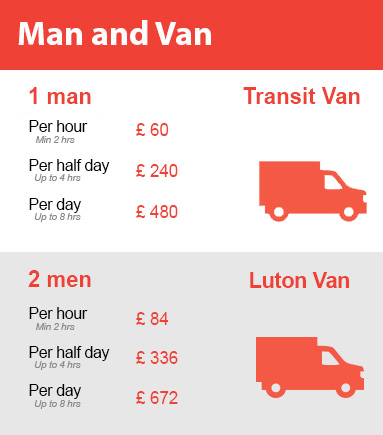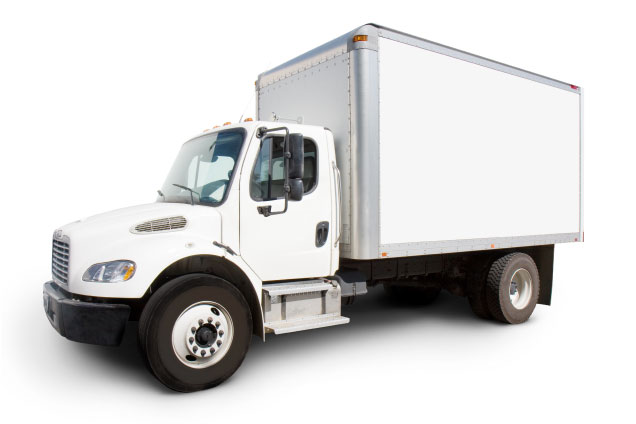Advice for a Smooth Move of Your Bed and Mattress
Posted on 25/05/2025
Advice for a Smooth Move of Your Bed and Mattress
Moving can be both an exciting and challenging experience. Naturally, ensuring that your furniture, especially your bed and mattress, stay protected and intact is a top priority. The process may sound simple--just pick them up and go. However, both beds and mattresses are sizable, heavy, and sometimes fragile or awkward to maneuver. Whether you're relocating across the city or moving long-distance, there are essential tips, practical advice, and best practices to secure a smooth move of your bed and mattress.

Why Careful Planning Matters When Moving Your Bed and Mattress
Beds and mattresses make up a significant part of your daily comfort. Damage or soiling during a move can be costly, inconvenient, and can affect your sleep health. Proper planning ensures the integrity and life of your furniture, and it may even save you time and money during your move.
- Preservation: Mattresses and bed frames can be expensive investments. Proper handling protects their longevity.
- Hygiene: Keeping your bedding clean means you can sleep stress-free in your new home from day one.
- Efficiency: Well-planned moves minimize stress, reduce moving time, and prevent accidental damage.
Preparing Your Bed and Mattress for Moving
1. Gather Necessary Supplies
*Preparation is key* for a seamless move. Before you even touch your bed or mattress, ensure you have all essential packing materials ready. Here's a checklist:
- Mattress bag or plastic wrap: Shields against dirt, moisture, and rips.
- Furniture blankets or moving pads: Provide extra protection for beds, especially ornate or wooden frames.
- Furniture straps/tie-downs: Helpful for securing items during transport.
- Toolkit: Remember screwdrivers, Allen wrenches, pliers, and a zip-top bag for hardware.
- Labels and markers: Keeping things organized makes reassembly easier.
2. Strip the Bed
Remove all bedding, pillows, mattress protectors, and decorative items. Wash and pack bedding separately in a clean, sealed bag or box. This avoids contamination during the move and keeps things organized.
3. Disassemble the Bed Frame
Each bed is unique, but most can be taken apart for easier moving. Refer to your manufacturer's manual if available, or snap photos as you disassemble to aid reassembly.
- Remove the mattress and box spring: Place aside, ensuring they remain flat or propped safely in a corner.
- Detach the headboard and footboard: Use your toolkit to undo bolts and screws. Keep all hardware in a labeled zip-top bag.
- Break down the frame: Separate rails, slats, and support bars as needed.
Packing and Protecting Your Mattress
1. The Importance of a Mattress Bag
Using a mattress bag is non-negotiable for protecting your investment. These heavy-duty plastic sleeves keep your mattress shielded from dirt, dust, water, pests, and stains--especially useful if you'll be storing it for any duration.
- Buy the right size: Mattress bags come in twin, queen, king, and California king variations.
- Seal well: Most bags tape or zip shut. Make sure the closure is secure to prevent unexpected tears or openings during your move.
- If you lack a mattress bag: Use heavy-duty plastic wrap or tarp, making sure it covers the entire mattress surface.
2. Handling Memory Foam and Hybrid Mattresses
Memory foam and hybrid mattresses should always be moved flat to prevent warping. Bending or folding them can damage internal layers.
- Support the mattress: Use a piece of plywood or several helpers to move heavier or floppy mattresses.
- Never tie on top of vehicles: Avoid the impulse to strap a mattress onto a car roof--this is unsafe and can harm both mattress and vehicle.
Moving the Bed Frame Safely
1. Protect Bed Frame Components
After disassembling, wrap wooden or metal components in moving blankets or bubble wrap. Stack tied-down slats, rails, and legs together and secure with rope or tape.
- Label each bundle: Mark parts with stickers or masking tape detailing their place in reassembly.
- Bag the hardware: Attach hardware bags directly to the headboard or main rail to avoid misplacement.
- Avoid taping directly: Tape can strip finishes from wood or metal. Always use protective padding beneath tape.
2. Special Care for Upholstered or Antique Beds
Upholstered, canopy, or antique bed frames demand extra caution. Wrap these in thick blankets and layer with plastic wrap if there's a risk of moisture. Consider enlisting professional movers for irreplaceable or particularly heavy frames.
Carrying and Loading Tips: Transporting Your Bed and Mattress
1. Get Enough Help
Beds and mattresses are awkward and often heavy. Never try to carry large items alone to prevent injury and property damage. Enlist the help of family, friends, or professionals.
- Assign lifting roles: Two or more people should carry the mattress and any large bed components.
- Clear the path: Remove trip hazards in hallways, stairwells, and entryways before lifting begins.
- Lift with your legs, not your back: Use proper technique to avoid strains or injuries.
2. Best Practices for Moving Mattresses Through Tight Spaces
Many mattresses can flex slightly, but avoid folding if not designed for it. To maneuver around corners or through doors:
- Stand mattresses on the side: Mattresses are easiest to pivot and move upright through narrow halls or staircases.
- "Twist and slide" method: Gently turn the mattress to slide it into the desired room or position.
3. Loading Your Vehicle or Moving Truck
For a smooth transport of your bed and mattress, correct positioning is everything.
- Mattress goes on its side or flat: For short moves, standing a mattress on its side is usually fine. For long-distance moves or with memory foam, lay it flat on top of another flat surface to avoid deforming.
- Keep the frame safe: Place frame components along the truck sides or bundle everything at the end over moving blankets to avoid bumping.
- Secure with straps: Prevent sliding or tipping during vehicle movement using tie-down straps or rope.
- Add soft padding: If stacking, put soft items (like sofa cushions) between hard surfaces and your mattress or frame.
Unloading and Setting Up: Unpacking Your Bed and Mattress
1. Clean Before Assembling
Once you arrive at your new home, it's tempting to piece your bed together immediately. However, clean the room thoroughly first, including vacuuming and dusting the bed's resting area.
2. Assemble the Frame Methodically
Use the photos, labeled bags, and instructions (if applicable) to reconstruct your bed frame. Secure each part snugly, but avoid overtightening.
- Check stability: Once assembled, carefully test for wobbling and tighten bolts or screws as needed.
- Attach headboards/footboards last: Add decorative pieces after the main structure is stable.
3. Unpack and Position Your Mattress
Carefully cut away the mattress bag or plastic wrap, avoiding damaging the mattress. Let memory foam or hybrid mattresses air out (and regain shape if compressed).
- Freshen up: Use gentle fabric spray or baking soda to deodorize if needed.
- Align mattress perfectly: Ensure the mattress sits flat on its foundation to prevent warping and for maximum comfort.
Additional Tips for a Smooth Bed and Mattress Move
- Measure ahead: Check doorways, stairs, and elevator spaces beforehand to avoid last-minute surprises during the move.
- Consider professional help: If you have a large, intricate, or particularly heavy bed, moving professionals can ensure a damage-free transport.
- Use bed assembly services: Some moving companies offer disassembly and reassembly--ideal for time savings and peace of mind.
- Don't store a mattress upright for long periods: This can cause internal sagging or damage--always store flat if possible.
What Not to Do When Moving Beds and Mattresses
- Never drag your mattress or bed components on the ground: Always lift to prevent tears, stains, or broken parts.
- Avoid using old sheets or thin plastic: Specialized mattress bags or thick wrapping provide true protection.
- Don't overtighten bolts: This can split wood or bend frames, making reassembly or later use difficult.

FAQs: Common Questions About Moving Beds and Mattresses
Can I fold my mattress for moving?
Most traditional innerspring or hybrid mattresses should not be folded, as this can cause permanent damage. Some memory foam mattresses may be compressed gently if the manufacturer states this is safe; check your warranty and guidelines before attempting.
How can I keep my mattress clean during a move?
Always use a mattress bag or, at minimum, several layers of thick plastic sheeting. Avoid exposure to rain or dirt, and make sure the transport vehicle is clean.
How do I store my mattress if I can't set it up right away?
Store your mattress flat and off the ground, in a cool, dry space. Avoid standing it on its side for extended periods--this prevents internal sagging.
Conclusion: Ensuring a Problem-Free Move of Your Bed and Mattress
Moving your bed and mattress may seem daunting, but with thoughtful planning and the right approach, you can ensure a smooth move and a restful first night in your new home. Remember to:
- Prepare and protect your bed and mattress early.
- Use quality packing materials and enlists enough help.
- Lift and transport items with care.
- Prioritize cleanliness and organization upon arrival.
With this comprehensive guide on advice for a smooth move of your bed and mattress, you're set to protect your furniture, your investment, and most importantly, your sleep! Happy moving!





